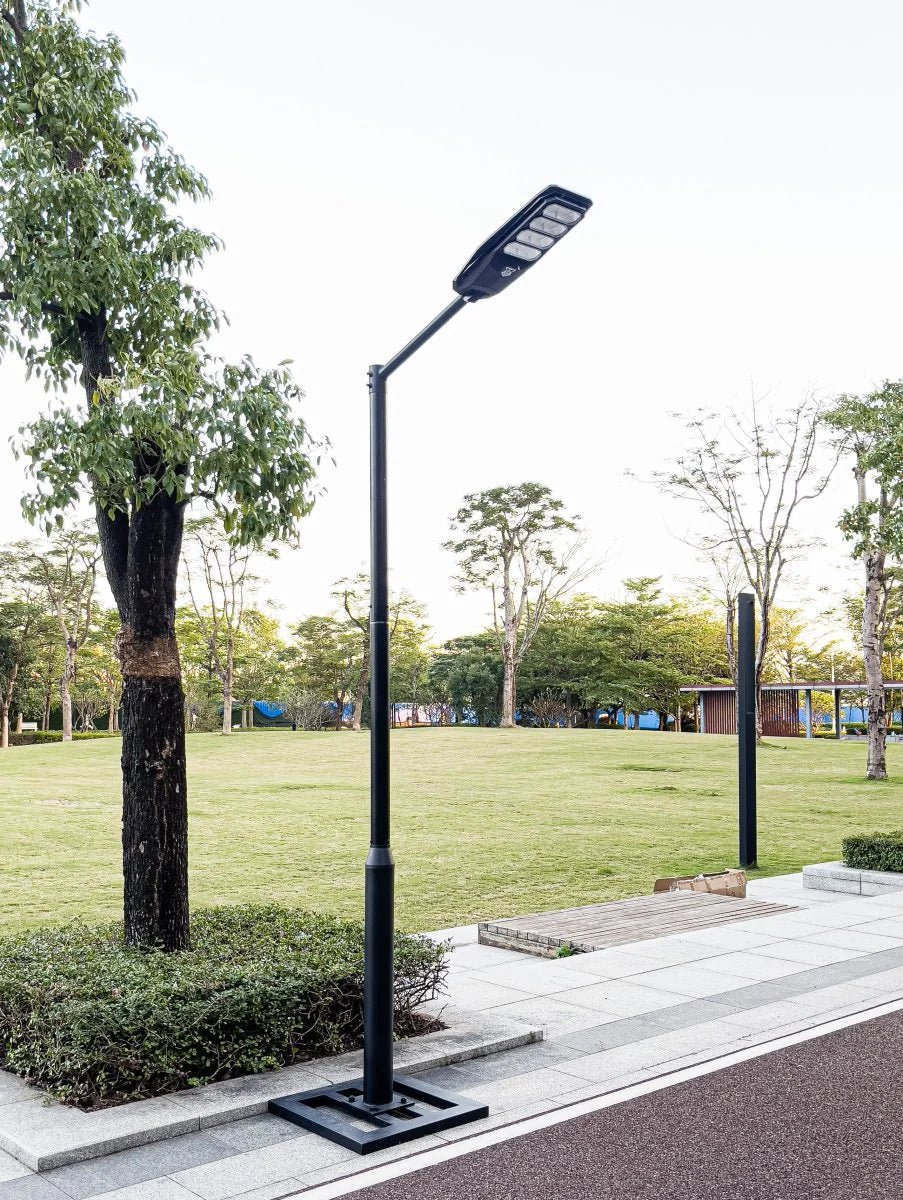Solar street lights are revolutionizing the way we illuminate our streets, parks, and public spaces. These solar light is harness solar energy to provide reliable, cost-effective, and eco-friendly lighting solutions. Whether you're a city planner, business owner, or homeowner, understanding the benefits, components, and installation process of solar street lights can help you make an informed decision about adopting this sustainable technology.
What Are Solar Street Lights?
Solar street lights are outdoor lighting systems powered by solar energy. They consist of a solar panel, battery, LED light, charge controller, and sometimes a motion sensor. During the day, the solar panel captures sunlight and converts it into electrical energy, which is stored in the battery. At night, this stored energy powers the LED light, providing illumination without relying on the electrical grid.
Key Components of Solar Street Lights
-
Solar Panel:Captures sunlight and converts it into electricity. The efficiency of the solar panel determines how much energy can be stored and used at night.
-
Battery:Stores the electrical energy generated by the solar panel during the day. It provides power to the LED light at night.
-
LED Light:Provides bright and efficient illumination. LED lights are preferred for their long lifespan and low energy consumption.
-
Charge Controller:Regulates the flow of electricity between the solar panel, battery, and LED light. It prevents overcharging and over-discharging of the battery, ensuring optimal performance and longevity.
-
Motion Sensor (Optional):Detects movement and activates the light, conserving energy when no motion is detected.
Benefits of Solar Street Lights
-
Eco-Friendly:Solar street lights use renewable solar energy, reducing reliance on fossil fuels and minimizing carbon emissions.
-
Cost-Effective:Although the initial investment may be higher, solar street lights have lower operating and maintenance costs compared to traditional street lights. They eliminate electricity bills and reduce maintenance expenses.
-
Energy Independence:Solar street lights operate independently of the electrical grid, providing reliable lighting even in remote or off-grid areas.
-
Easy Installation:Without the need for extensive wiring or trenching, solar street lights are easier and faster to install.
-
Low Maintenance:With fewer components and no reliance on the electrical grid, solar street lights require minimal maintenance.
-
Enhanced Safety:Reliable street lighting improves safety for pedestrians and drivers, reducing accidents and crime rates.
Types of Solar Street Lights
-
Standalone Solar Street Lights:Operate independently without connection to the electrical grid. They are ideal for remote areas and locations where extending the grid is not feasible.
-
Grid-Connected Solar Street Lights:Supplement grid power with solar energy, reducing electricity consumption and costs. They provide continuous lighting even during periods of low sunlight.
-
All-in-One Solar Street Lights:Integrate all components (solar panel, battery, LED light, and charge controller) into a single unit, simplifying installation and maintenance.
-
Smart Solar Street Lights:Equipped with advanced features like remote monitoring, dimming, and adaptive lighting, these lights optimize energy usage and provide enhanced control and efficiency.
Installation Process of Solar Street Lights
-
Site Assessment:Evaluate the location to determine the best placement for solar street lights. Consider factors like sunlight exposure, shading, and the specific lighting needs of the area.
-
Design and Planning:Develop a lighting plan that includes the number and placement of lights, pole height, and spacing. Ensure the design meets local regulations and standards.
-
Foundation and Pole Installation:Install the foundation and poles for the solar street lights. Ensure they are securely anchored to withstand environmental conditions.
-
Component Assembly:Assemble the solar panel, battery, LED light, and other components. Follow the manufacturer’s instructions for proper installation.
-
Testing and Commissioning:Test the system to ensure all components are functioning correctly. Adjust settings as needed to optimize performance.
-
Urban and Rural Roads:Provide consistent lighting for roads and highways, improving safety for drivers and pedestrians.
-
Parks and Recreational Areas:Enhance the usability and safety of parks, trails, and playgrounds after dark.
-
Parking Lots:Offer reliable lighting for parking areas, increasing security for vehicles and pedestrians.
-
Commercial and Industrial Areas:Illuminate business premises and industrial zones, ensuring safe and secure environments.
-
Residential Streets:Improve the aesthetics and safety of residential neighborhoods with well-lit streets and pathways.
Challenges and Considerations
-
Initial Investment:The upfront cost of solar lights can be higher than traditional lights. However, the long-term savings in energy and maintenance costs can offset this initial investment.
-
Sunlight Availability:Solar street lights depend on sunlight for energy. In areas with limited sunlight, additional planning and design adjustments may be necessary to ensure reliable performance.
-
Battery Life and Replacement:Batteries have a limited lifespan and will need periodic replacement. Choosing high-quality batteries and proper maintenance can extend their life.
Conclusion
Solar street lights are a sustainable and cost-effective solution for outdoor lighting. They offer numerous benefits, from reducing energy costs and carbon emissions to enhancing safety and convenience. By understanding the components, benefits, and installation process of solar street lights, you can make an informed decision about incorporating this innovative technology into your community, business, or home. Embrace the future of lighting with solar street lights and contribute to a brighter, greener world.



1 comment
Yuvaraj
100 watts street light 100 nos needed